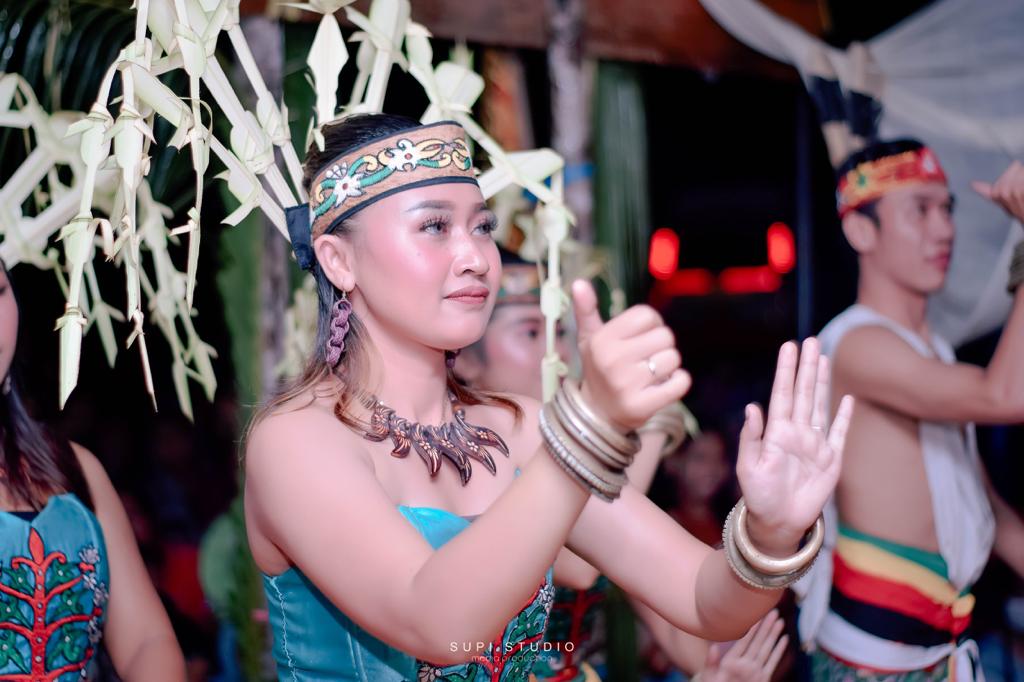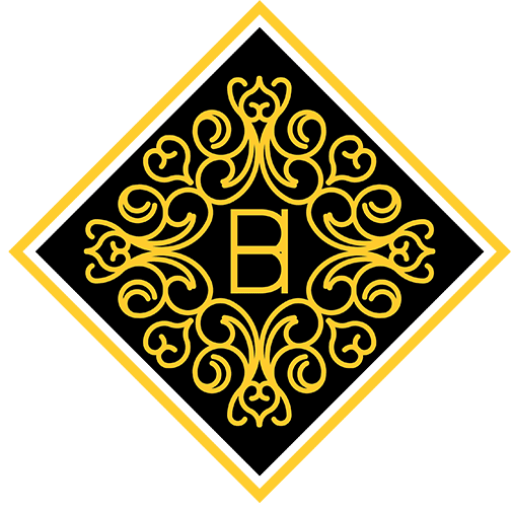At a Glance
Dayak Cultural Dance & Music Performance
The Dayak ethnic group from Kalimantan, Indonesia has a unique and impressive culture. This culture includes various forms of traditional music and dance.
Borneo Heritage acts as a vessel, proudly displaying the best of these performing arts and giving audience members an extraordinary experience.


~ Vision and Mission ~
*Introduce the traditional culture and performing arts of the Dayak people of Kalimantan.
*Help local arts collectives in Kalimantan to develop on both the national and international stage.
PERFORMANCES OPTION
Art Studio in East Barito district from Central Kalimantan
1. Live music category
Duration : 4-6 hours
This show will be performed by 7 professional dancers and 7 musicians from one of the studios in East Barito, Central Kalimantan and will present several choices of traditional dances from the Maanyan Dayak tribe, namely Bahalai, Giring-Giring, Gelang Balian Dadas, and Balian Bawo dances (followed by a Wadian Bulat performance, a form of Dayak contortion), and Sendratari (dance theater).
2. Recording music category
Duration : 4-6 hours
This show will be performed by 8 professional dancers from one of the studios in East Barito, Central Kalimantan and will present several choices of traditional dances from the Maanyan Dayak tribe, namely Bahalai, Giring-Giring, Gelang Balian Dadas, and Balian Bawo dances (followed by a Wadian Bulat performance, a form of Dayak contortion), and Sendratari (dance theater).
Additional dance for further performance is Kinyah Dance, Tasai Dance, Manasai Dance and Mandau Dance.
Art Studio in Kubu Raya district from West Kalimantan
1. Solo Sape performance
Duration : 45 minutes
This Sape show will be performed by professional Sape artist Agus Ken Frengky from the Dayak Kanayatn community in west Kalimantan.
2. Performances by musician group and solo dancer
Duration : 35 minutes
This show will be performed by 5 musicians whose present instrument for Sape, Gendang or drum, Gong and flute music player followed by solo dancer present of Mandau and Gong
3. Performances by musician and dancers group
Duration : 60 minutes
This show will be performed by 7 dancers and 7 musicians who will present several choices of traditional dances from the Kanayatn Dayak tribe, namely the Jubata, Pilanuk, Nutuk, Nampi’ Seak and Nimang Padi dances. And the show will be continued with modern art dances.
DANCE DESCRIPTION - CENTRAL BORNEO
Bahalai Dance (Nandrik) or Selendang Bawi Dance is a form of dance that emphasizes movements of the selendang scarf, worn by women Dayak dancers in Central Kalimantan. This dance is performed as a ritual to give thanks during special events such as weddings, harvests, or housewarming parties.
This traditional Dayak Ma’anyan dance from Central Kalimantan focuses on the movements of a staff wielded by the dancer. It is performed as an expression of joy and jubilation.
This is a ritual dance performed by Wadian/Balian Dadas, women dukun (shaman), one of the five dukun of the Dayak Ma’anyan and Lawangan people. When the youngest dukun is female in Barito Timur (the eastern part of Central Kalimantan), this dance is performed. It is traditionally used as a healing ritual, but is now frequently performed as a part of cultural festivals.
This is a ritual dance performed by Wadian/Balian Dadas, male dukun (shaman), one of the five dukun of the Dayak Ma’anyan and Lawangan people. When the youngest dukun is male in Barito Timur (the eastern part of Central Kalimantan), this dance is performed. It is traditionally used as a healing ritual, but is now frequently performed as a part of cultural festivals.
Wadian Bulat is one of the typical arts of the Dayak Maanyan, Lawangan and Bawo hamlets, namely a dance performance accompanied by the attraction of folding limbs such as hands and feet to the head. Wadian round is mostly done by male dancers, because it is more appropriate to do for aesthetic reasons or moral norms.
The performance tells the legend of the ghost, Bajat Panguluh, who came from a long line of medicine men. Bajat Panguluh misused spiritual power and holy oil so that he could enter the land of the dead to try and heal those who had already passed from sickness.
This is only one of the options for possible stories/legends that can be told through dance drama.
This traditional Dayak dance combines the arts of war, theater, and self defense. The dance originates from the historical practice of hunting and killing an enemy leader.
This dance is a form of giving thanks to God and reflects the practice of working together and helping each other to solve problems.
This dance is an expression of joy or a welcoming to guests that are visiting Kalimantan. It originates from the Dayak Ngaju people of Central Kalimantan.
This dance is a reflection of the struggle for self respect and honor, using the mandau weapon as a symbol. This mandau is a traditional Dayak dagger from Central Kalimantan.
DANCE DESCRIPTION - WEST BORNEO
Gong dance is a traditional Dayak dance performed by a girl with elegance and uses gong as a medium for dance. This gong dance is often referred to as Kancet Ledo by the Dayak community.
This dance is a reflection of the struggle for self respect and honor, using the mandau weapon as a symbol. This mandau is a traditional Dayak dagger from Central Kalimantan.
Jubata dance is a dance of thanksgiving to God (Jubata) performed by one male dancer and five female dancers, where the movement begins with the stomping of the right foot then the left while walking towards the front while forming a circle, with the position of both hands holding the property in the form of plates, glasses and bowls containing offerings
Pilanuk dance is a traditional dance of the Dayak Kanayatn tribe of West Kalimantan. In ancient times this fly dance was used to train agility or leg agility in jumping and avoiding obstacles. This is done because of the war between tribes. In addition, this dance is also used for hunting. Then the agility training is now turned into a dance.
Nutuk Dance is a traditional Dayak dance performed to show gratitude for the harvest.
Nampi’ Seak dance is a dance that comes from the tradition of the Kanayatn Dayak community, namely winnowing or cleaning paddies which develops elements of simple motion from daily work. The Nampi’ Seak dance symbolizes how to separate the filled rice grains from the empty ones or in the Kanayatn Dayak language called ampa’k.
The Nimang Padi dance is a symbol of respect and gratitude to Jubata (God) and the spirits of the ancestors, so that the offerings given by the Kanayatn Dayak community are illustrated.
SAPE PERFORMANCE
Sape is a traditional lute of the Orang Ulu community or “upriver people” of central Borneo. The sape was once played solely during healing ceremonies within the rumah panjang (longhouses), but gradually became a social instrument that is used as a form of entertainment. The colourful jungle motifs that adorn the body of the sape mark this change in purpose.
Technically, the Sape is a relatively simple instrument, with one string carrying the melody and the accompanying strings as rhythmic drones. In practice, the music is quite complex, with many ornamentations and thematic variations. There are two common modes, one for the men’s longhouse dance and the other for the woman’s longhouse dance. There also is a third rarely used mode. Sape music is usually inspired by dreams and there are over 35 traditional pieces with many variations. The overall repertoire is slowly increasing.













